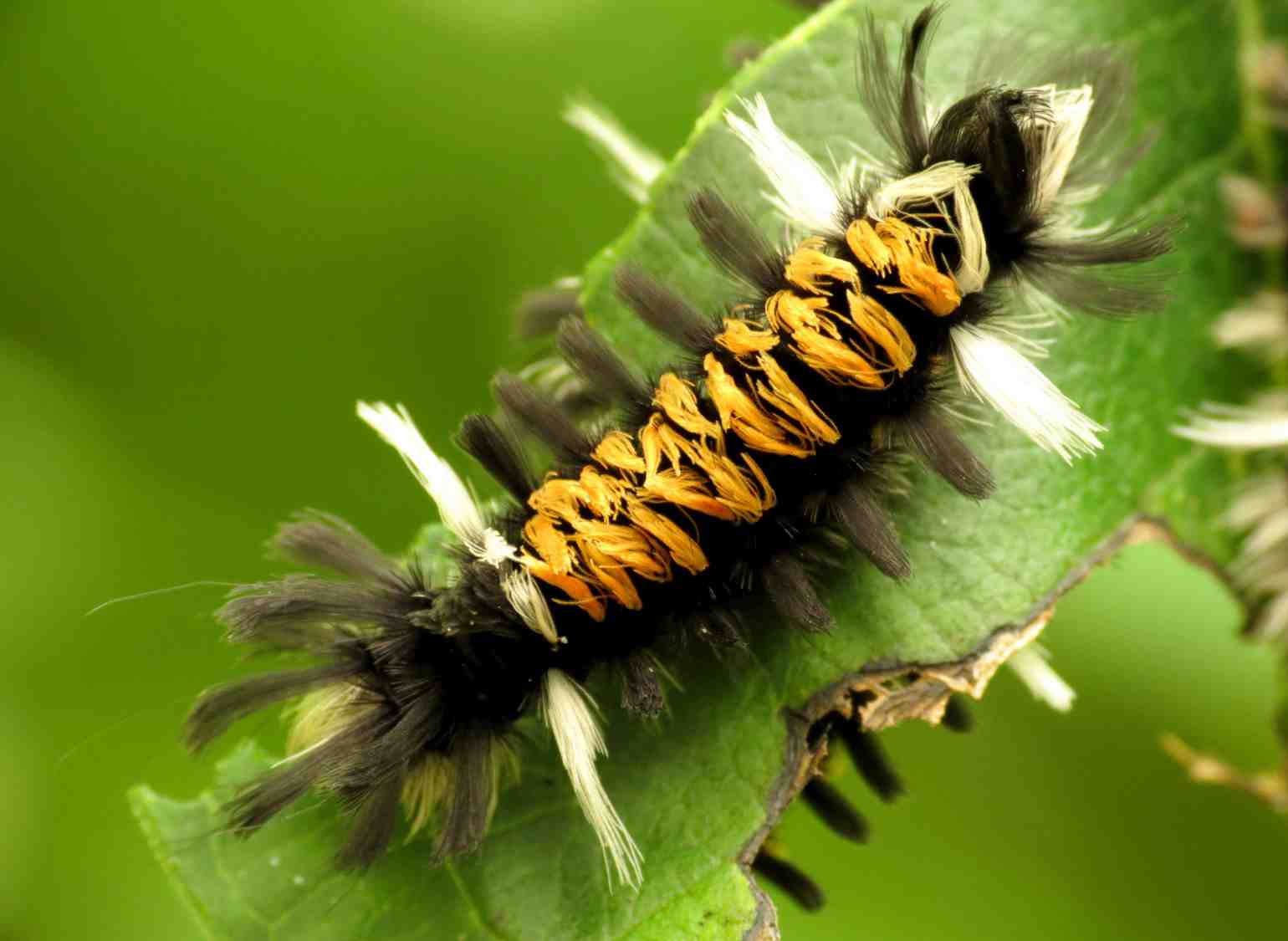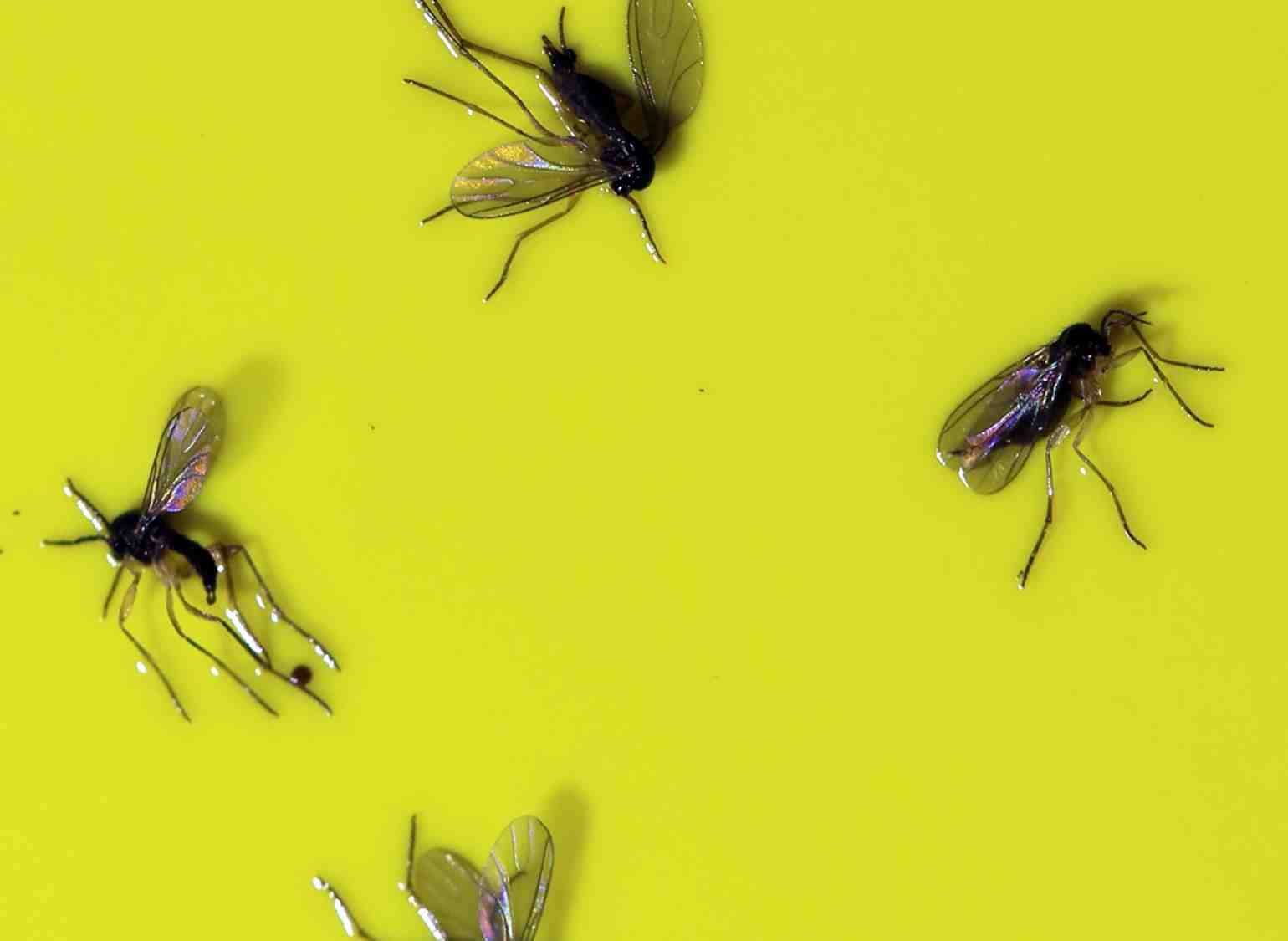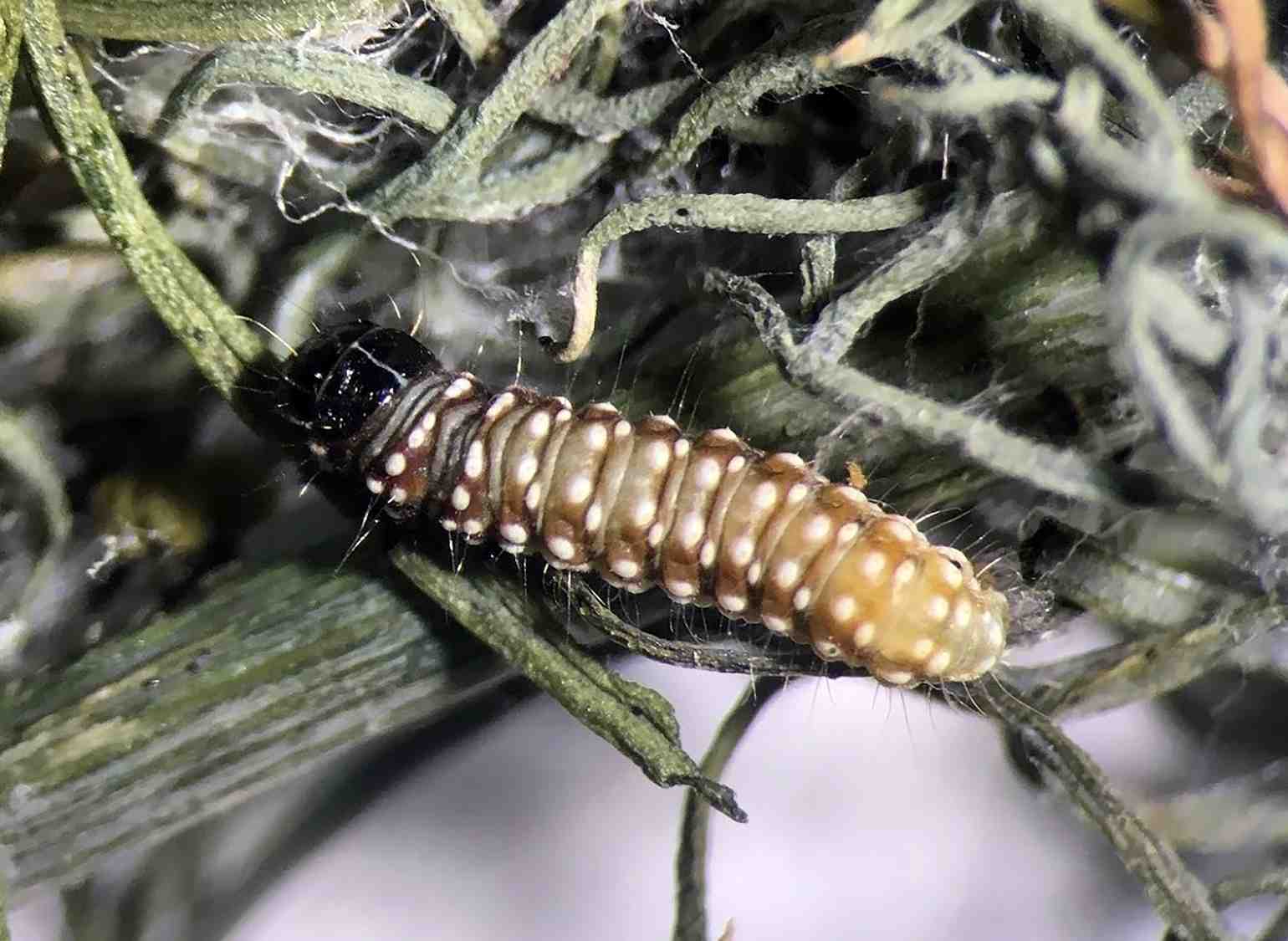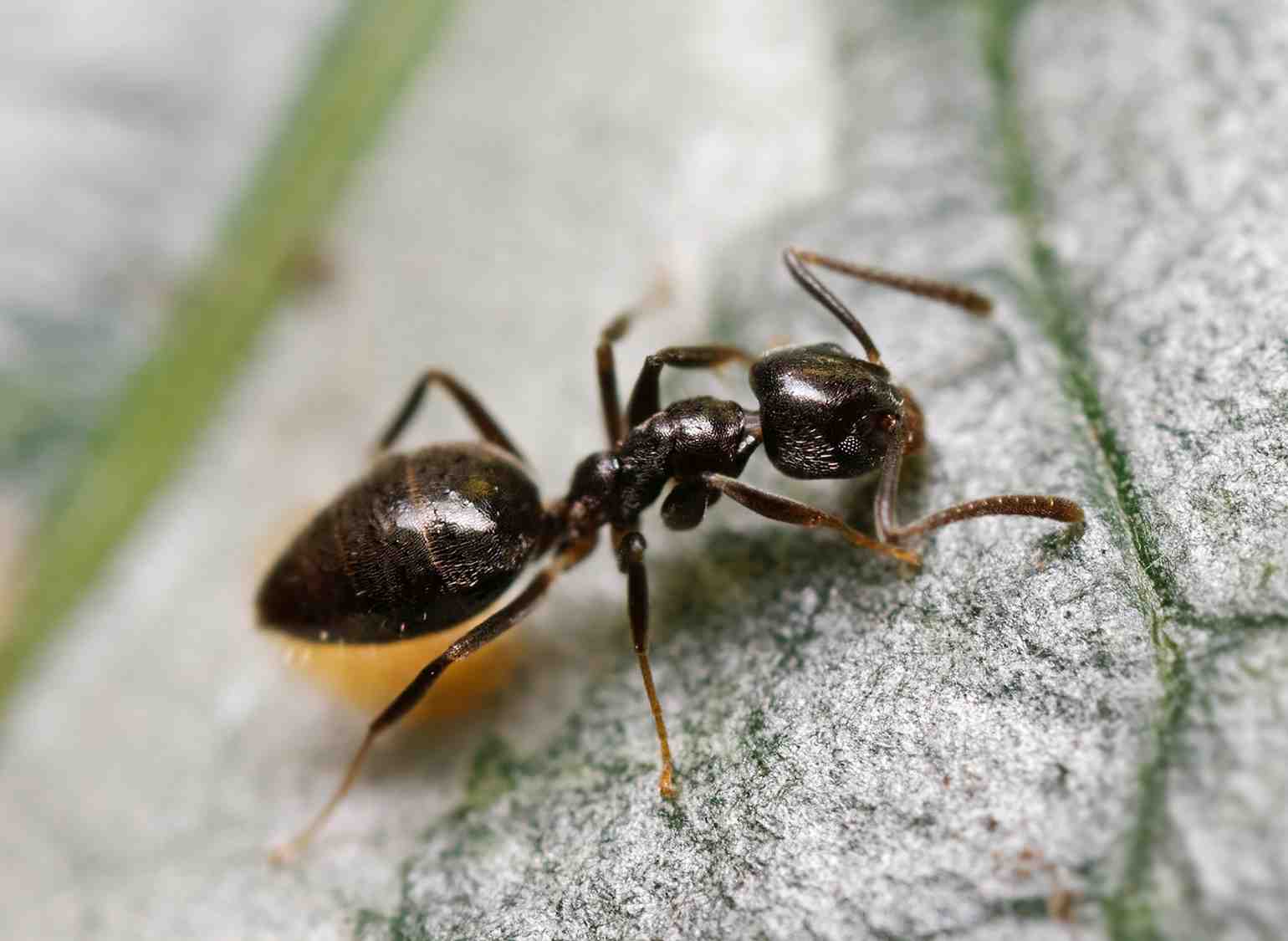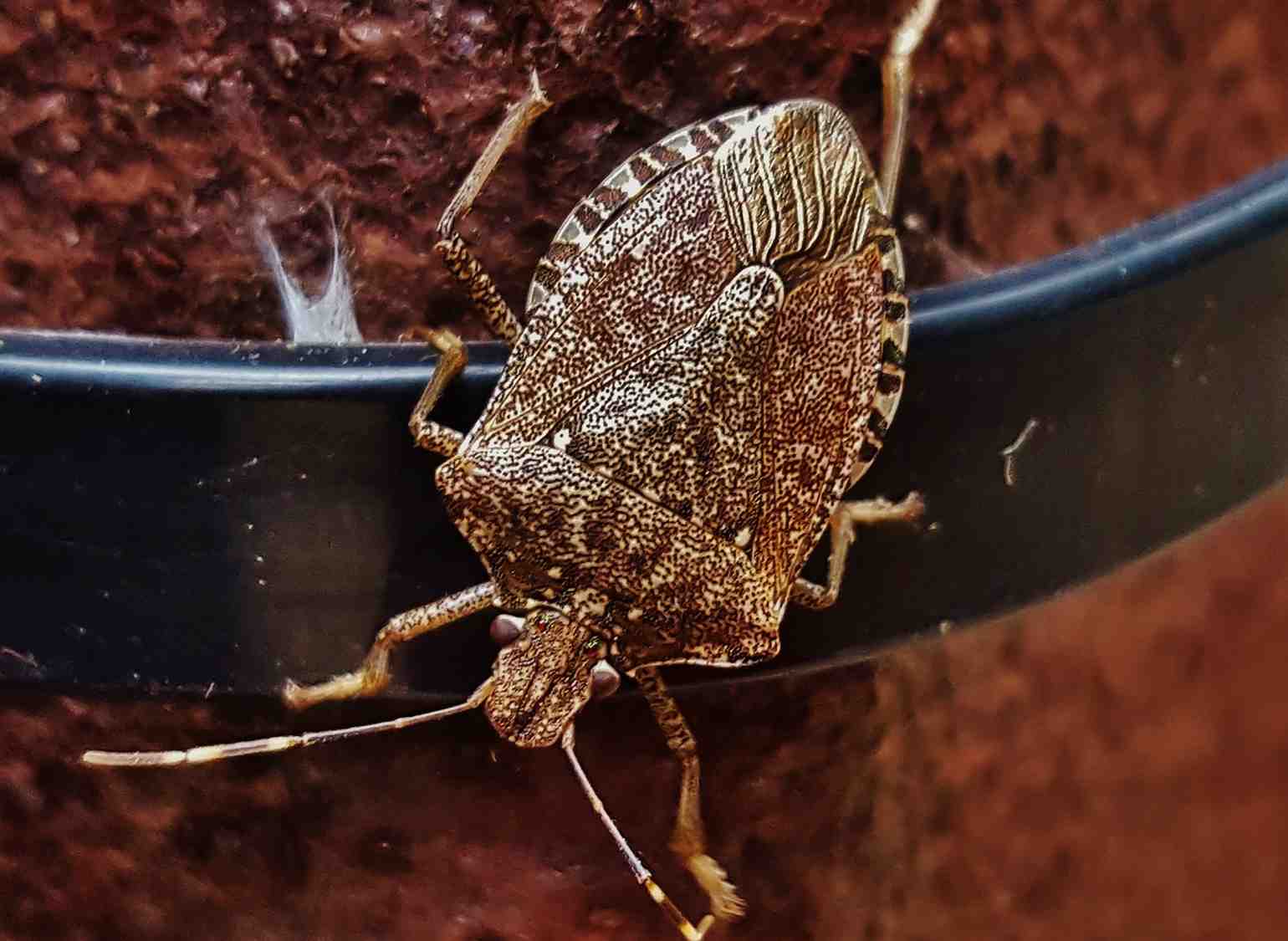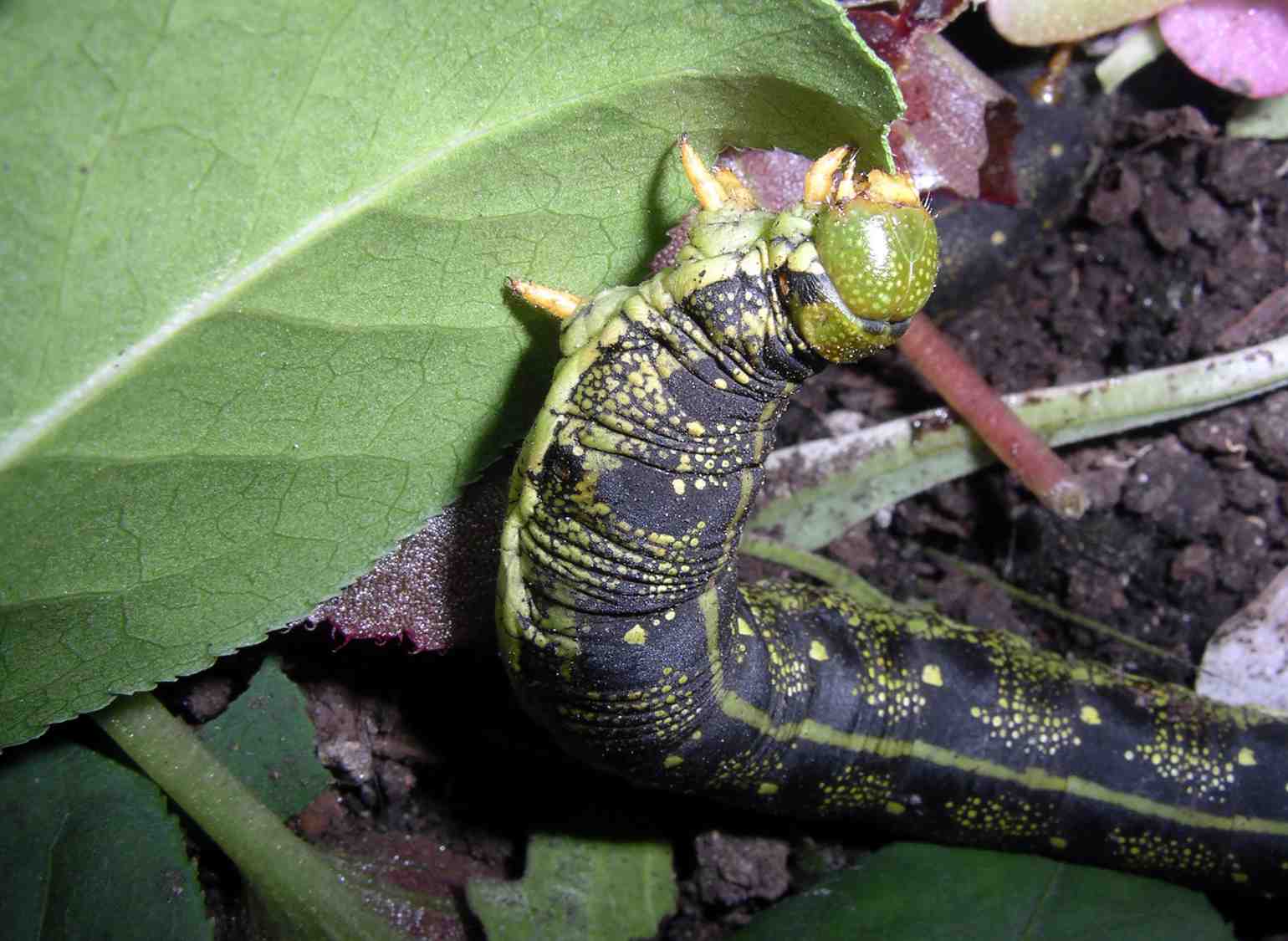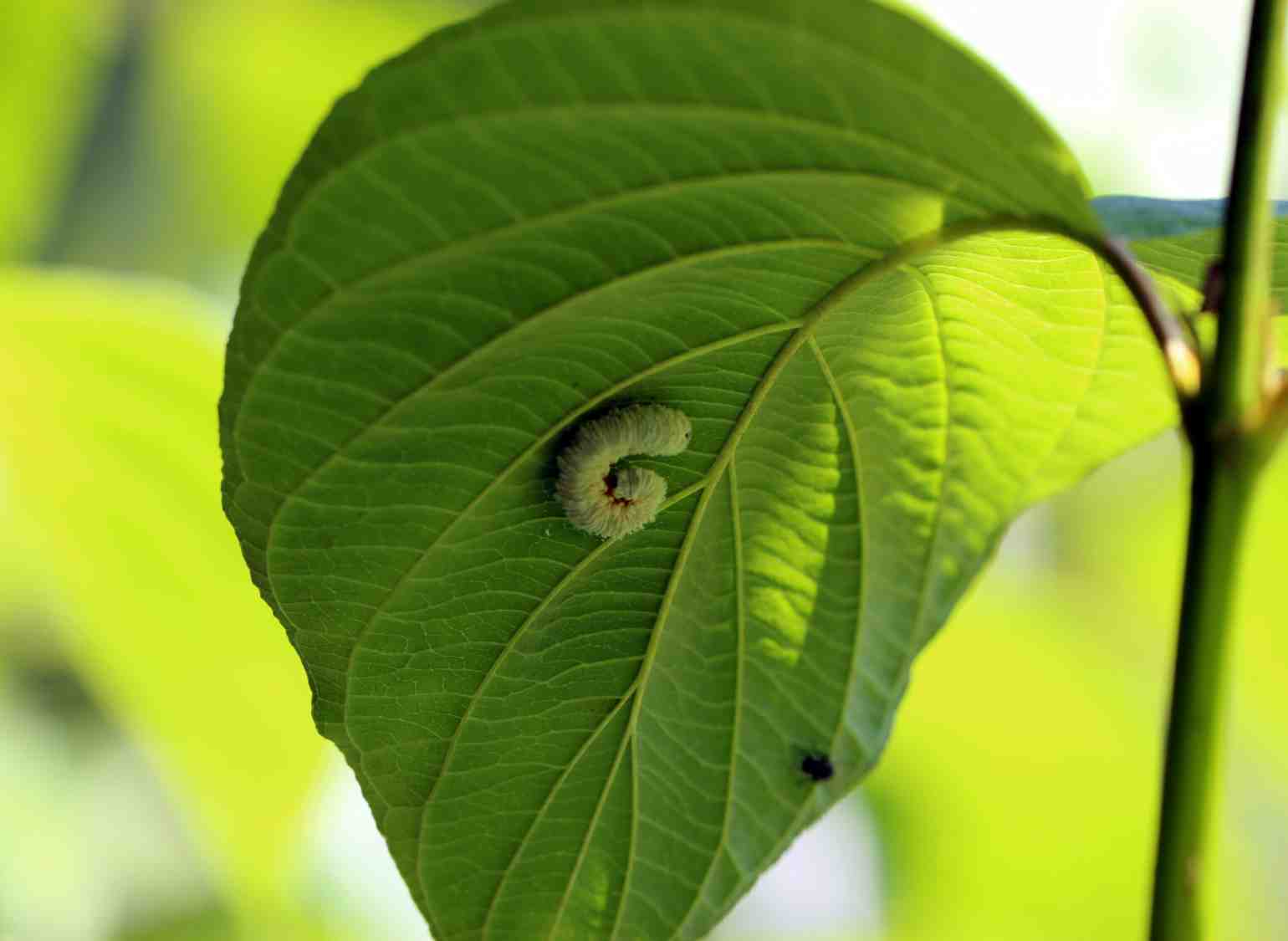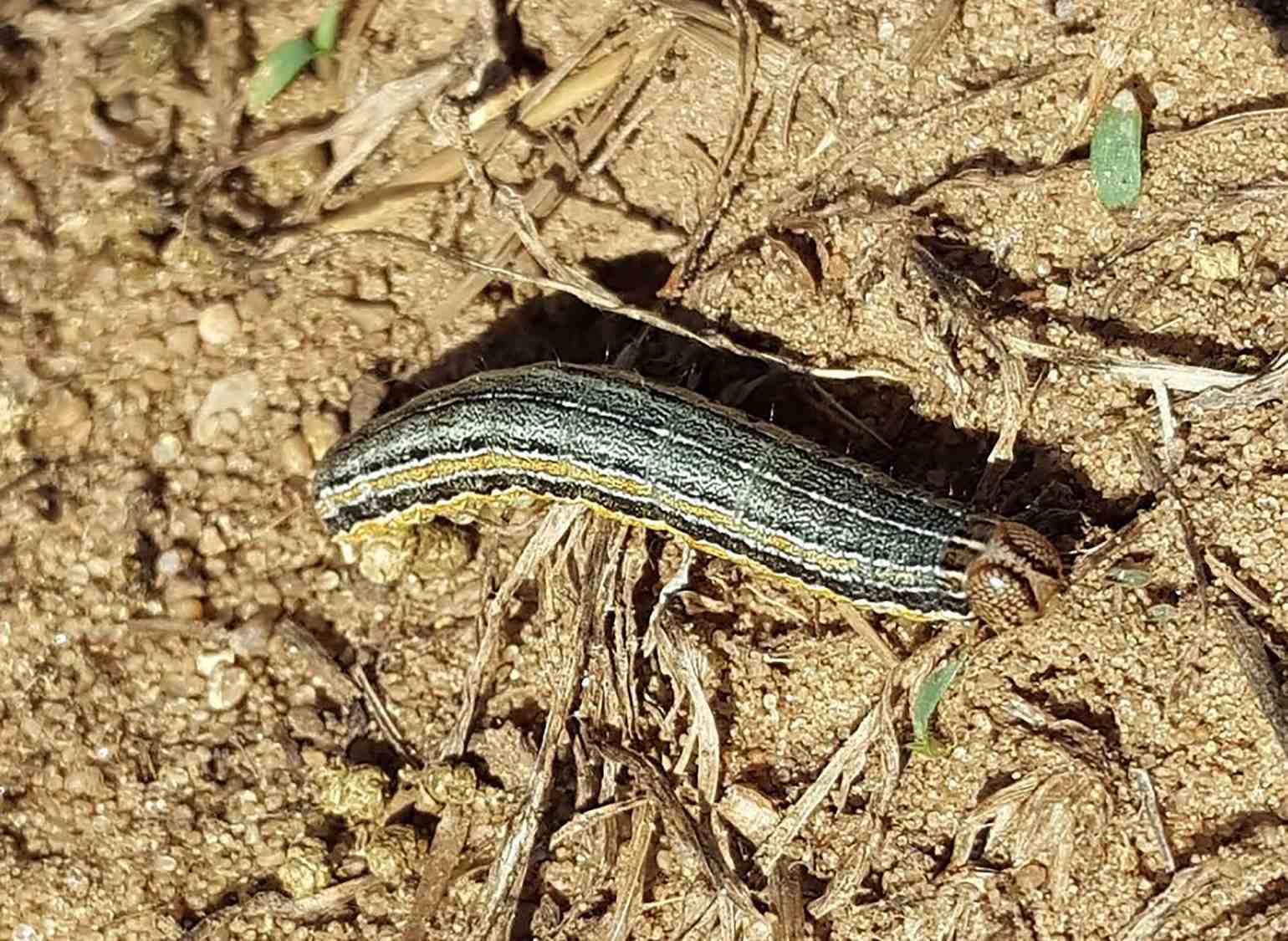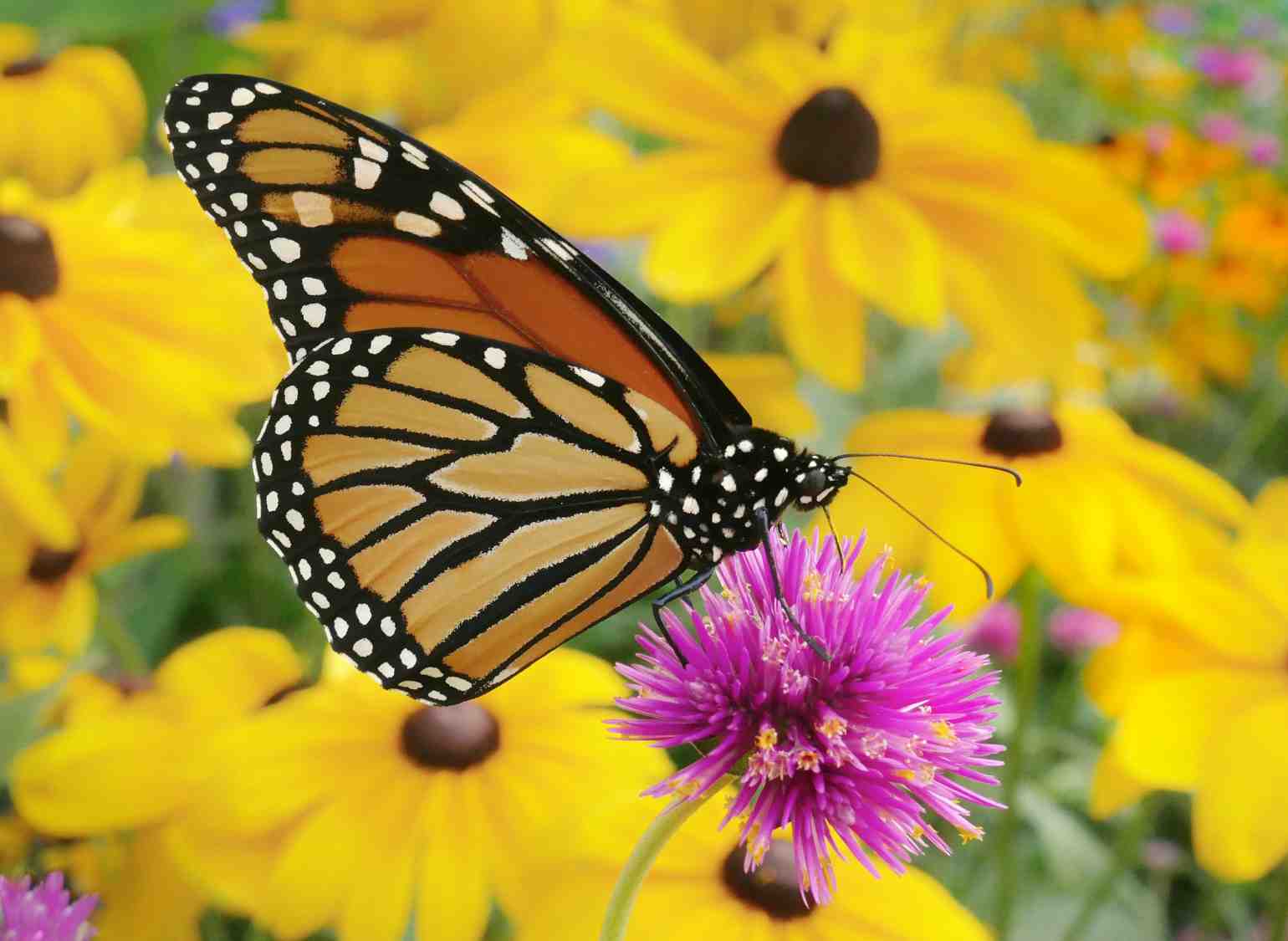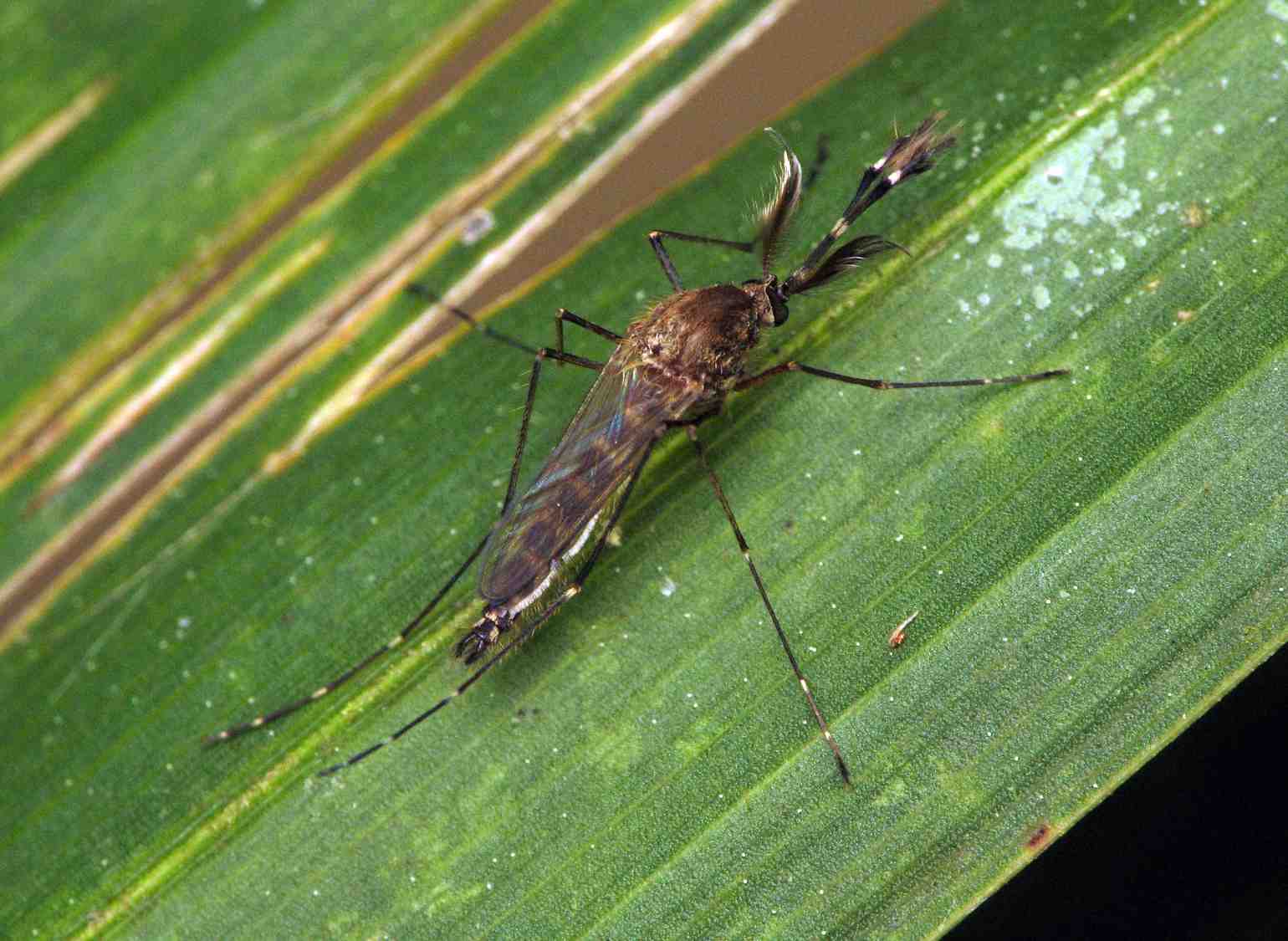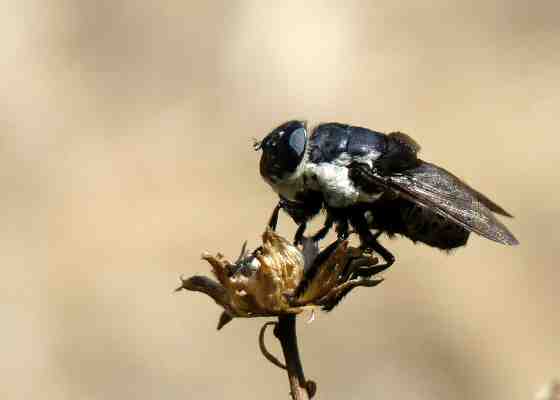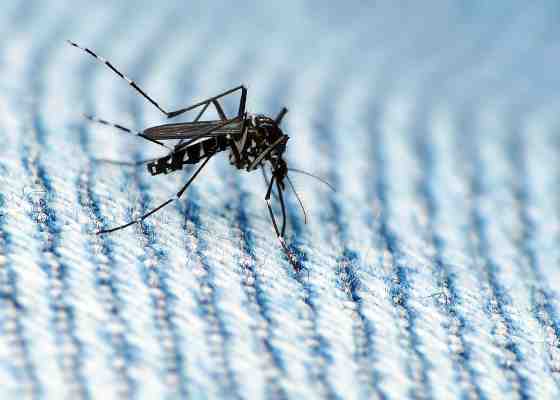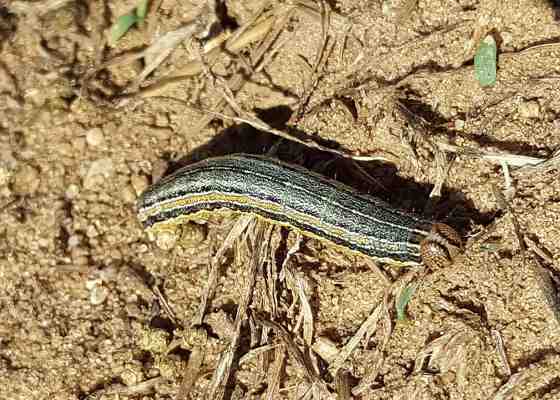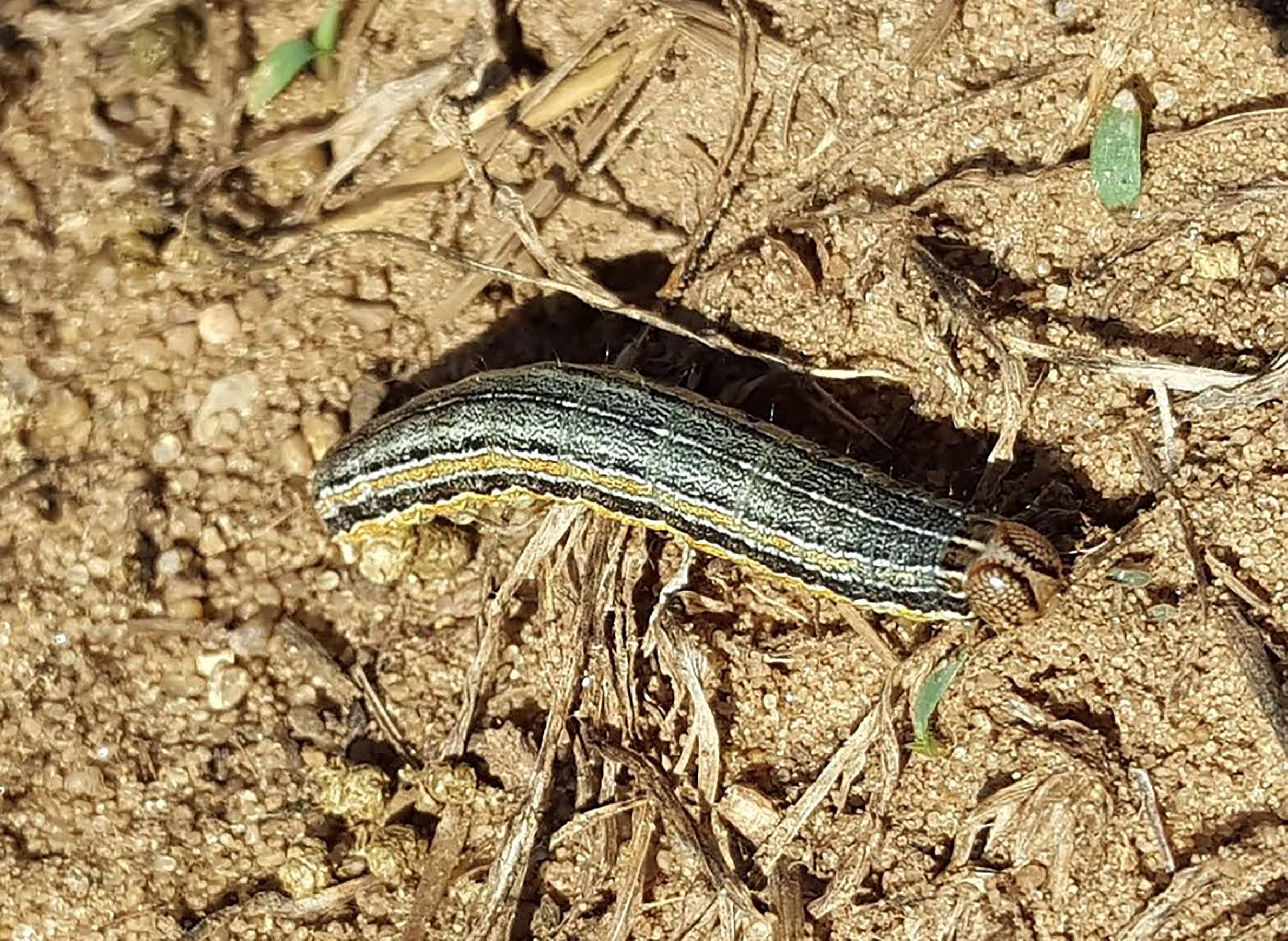
Wisconsin's Top 10 Insect Trends Of 2018

Every year, the University of Wisconsin Insect Diagnostic Lab receives thousands of samples and reports from around the state and region, providing a unique perspective into insect and other arthropod trends in Wisconsin and beyond. Looking at the entirety of these dispatches, the top 10 trends observed in 2018 may provide a forecast for what could be expected in 2019.
In 2018, insects stood out in the state — there were no arachnids or other types of arthropods that made as much of an impression as the organisms on this list. The year was defined in large part by its wet weather, the allure of milkweed and, of course, the spread of invasive species.
10. Dagger and tussock moths
A few species of fuzzy caterpillars were surprisingly abundant last year and there's a good chance you might have bumped into these in your own neighborhood. Two similar-looking yellowish species, the American dagger moth (Acronicta americana) and the white-marked tussock moth (Orgyia leucostigma), were extremely common around Wisconsin and two of the most widely reported caterpillars over the summer.
Another tussock moth associated with milkweed was also surprisingly common in 2018. With many Wisconsinites growing milkweed to attract monarch butterflies, the black and orange caterpillars of the milkweed tussock moth (Euchaetes egle) were also noted in abundance around the state.
9. Fungus gnats
Pick any spot on a map of Wisconsin, and most likely 2018 was a soggy year. Understandably, rain encourages insects and other creatures that thrive under damp conditions. Last year's rains created great conditions for fungus gnats (Family Sciaridae), which became quite abundant by late summer.
While fungus gnats are harmless to people and pets, they can be an annoyance if present in high numbers. Fungus gnats thrive in damp organic materials, meaning that rich soil, compost piles, and decaying plants can produce masses of these tiny, dark-colored flies. The larvae of these insects can also be common in the soil of houseplants. As Wisconsinites brought their favorite potted plants indoors in autumn to avoid approaching frosts, reports of indoor fungus gnats were common.
8. Purple carrot-seed moth
With several new, non-native insects showing up in Wisconsin every year, the impacts of each species can vary significantly. Some exotics, like the emerald ash borer make massive waves, while others cause merely a ripple. The impacts of one of the state's newest invasive insects, the purple carrot-seed moth (Depressaria depressana), are not yet fully known. This European species was spotted in Wisconsin for the first time in July 2018.
The tiny caterpillars of these moths love to feed on the flowers (umbels) of plants from the carrot family. Below-ground plant structures (such as the taproots of carrots) aren't impacted, but notable damage to herbs like dill, fennel, and coriander can occur. As a result, this pest may be a concern for seed producers, commercial herb growers, or home gardeners with a fondness for dill and related herbs.
The purple carrot-seed moth has been reported in eight Wisconsin counties thus far — Brown, Columbia, Dodge, Kewaunee, Milwaukee, Racine, Sheboygan and Washington Counties — so reports of new sightings are encouraged.
7. Odorous house ants
Imagine the stereotypical black ants zeroing in on sugary foods at a picnic and you'd have a fitting profile of the odorous house ant (Tapinoma sessile). Of the 100-plus ant species in the Midwest, the odorous house ant stood out in spring and early summer last year with its sheer abundance. The UW Insect Diagnostic Lab was flooded with calls about these sugar-loving ants during 2018's rainy spring, especially when they wandered indoors.
The spring rains may have forced the ants from waterlogged colonies to seek out higher-and-drier locations, making this species the most commonly reported ant at the lab.
6. Stink bugs
While the Midwest is home to over 50 species of stink bugs (Family Pentatomidae), one particular species — the invasive brown marmorated stink bug (Halyomorpha halys) — stands out to give the rest a particularly bad reputation. If you live in a part of the state with this stink bug, you may have already encountered the species. With its habit of sneaking indoors in the fall, it replaced boxelder bugs in some areas as the top home-invading nuisance pest of 2018.
This species, originally from East Asia, has made the lab's top 10 list for several years now, and unfortunately doesn't show any signs of slowing down. In 2018 alone, the brown marmorated stink bug was detected in eight new Wisconsin counties, which hints at potential damage to fruit and other crops in those areas in the coming years.
5. White-lined and other sphinx moths
The white-lined sphinx moth (Hyles lineata) can be a common species, so encountering one of the 3-inch long hornworm caterpillars isn't unusual. However, these caterpillars can also be encountered in massive road-traversing hordes if the conditions are just right. From midsummer onwards, large numbers of sphinx moth caterpillars were observed around the state — in some cases by the tens of thousands.
If you didn't spot any of the caterpillars themselves, you might have encountered the large adult moths with their hummingbird-like behavior in late summer. Several other sphinx moths species also had a strong presence in 2018, such as the clearwing hummingbird moths (Hemaris thysbe) and the tobacco and tomato hornworm caterpillars (Manduca spp.) which can regularly be encountered in gardens as they munch away on tomato and pepper plants.
4. Sawflies
Sawflies, the caterpillar copycats of the insect world, are a diverse group, so they're always present to some extent. Last year saw an unexpected abundance of two particular types in Wisconsin — the dogwood sawfly (Macremphytus tarsatus) and the non-native Monostegia abdominalis, which feeds on creeping Jenny and related plants from the loosestrife group (Lysimachia spp.). While sawflies are plant feeders, dogwood sawflies can also damage the soft wood of a home's siding or trim when these insects excavate small chambers to pupate in. The lab saw a distinct bump in reports of wood damage from the dogwood sawfly in 2018.
3. Armyworms
True armyworms (Mythimna unipuncta) can be a dynamic and sporadic pest in the Midwest. This species doesn't survive the cold winters of the region, so adult armyworm moths must invade from points south each spring. Depending on national weather patterns, the arrival of the adult moths can vary significantly from year to year. If an early mass arrival is followed by abundant food and ideal conditions for the ensuing caterpillars, large populations can result.
Once they've arrived, true armyworms can go through two to three generations in Wisconsin — a second generation of caterpillars made an alarming appearance in mid-to-late July. Under the worst conditions during the summer, massive hordes of these caterpillars decimated crop fields before marching across roads by the tens or hundreds of thousands to look for their next meal. In some cases, that next meal included turfgrass, meaning that some Wisconsinites came home from work to biblical hordes of caterpillars and half-eaten lawns.
2. Monarch butterflies
Much to the delight of fans and conservationists, the iconic monarch butterfly (Danaus plexippus) appeared to have a banner year in the Midwest in 2018. Reports and observations of high numbers of monarchs poured into the lab during the summer months. As comforting as these reports were, the butterflies still faced a perilous 2,000 mile journey to reach their overwintering grounds in Mexico.
The most consistent measurement of the eastern monarch population comes from estimating the area occupied by the densely-packed overwintering butterflies. In late January 2019, the latest count was released with encouraging news — the eastern monarch population is up 144 percent over the previous year and is estimated to be the largest in over a decade. In contrast, the western monarch population overwinters in southern California and has recently dipped to alarmingly low numbers.
Regardless of the winter assessments, monarchs face tough challenges and Wisconsinites are encouraged to help conserve this iconic species. The Wisconsin Monarch Collaborative is looking to organize resources for those wishing to join the effort.
1. Floodwater mosquitoes
Mosquitoes snagged the top spot on 2018's list for good reason. The upper Great Lakes region is home to over 60 different mosquito species, but one subset — the “floodwater” mosquitoes — drove the storyline and intruded on outdoor activities through much of the spring and summer months.
Mosquitoes in this group, such as the inland floodwater mosquito (Aedes vexans), flourish when heavy rains come. Last year's season kicked off in force with a batch of pesky and persistent floodwater mosquitoes just before Memorial Day weekend. Mosquito monitoring traps in southern Wisconsin captured record numbers shortly thereafter. Later in the year, the Midwest experienced a brutal series of severe rainstorms, setting the stage for an encore performance. It was this second explosion of mosquitoes that caught the attention of anyone in the state trying to enjoy the outdoors in late summer — a time of the year when these pests are typically winding down for the year.
University of Wisconsin-Extension entomologist PJ Liesch is director of the University of Wisconsin-Madison Insect Diagnostic Lab. He blogs about Wisconsin insects and can be found @WiBugGuy on Twitter.



